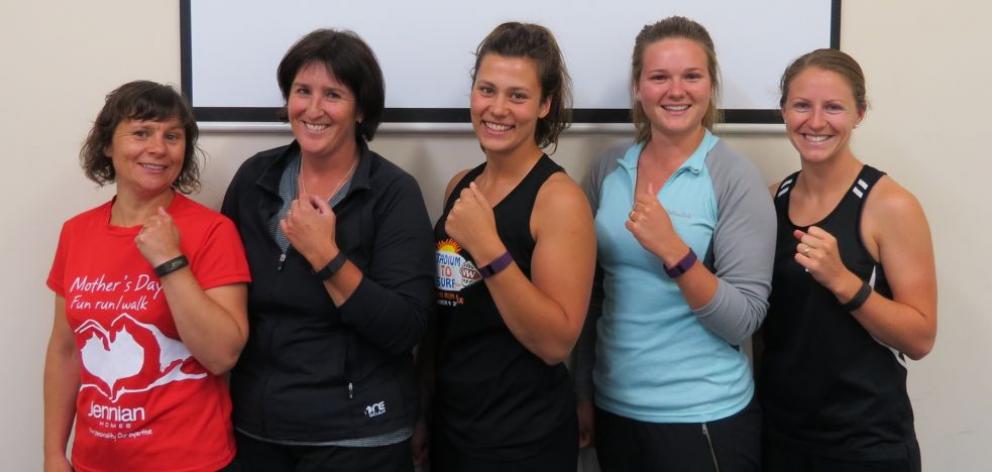
Wearable activity trackers, such as Fitbit and Nike FuelBand, were popular Christmas gifts last year. The Star reporter DAVID BECK looks into what is driving the new fitness craze.
Dunedin women Amanda Dyer, Kerri Maclennan, Chanel Pienaar, Kelsey Howlett and Kelly Hamill all work in the sports and exercise industry and all received activity trackers as Christmas or birthday gifts.
There are a range of trackers - some simply count how many steps you take each day, some track your heart rate and some use GPS to measure exactly how far you travelled. They can be synchronised with applications on smartphones and computers for in-depth analysis of activity.
Mrs Hamill said she did not think she wanted one of the devices but hers had grown on her.‘‘It's kind of addictive - it's awesome to keep on track in terms of how many steps you do each day and how far you travel. I use it when I run in terms of the distances and how many flights of stairs you go up when you run up a hill,'' she said.
Mrs Dyer said she liked that she was able to set her own goals on the device.
‘‘It's not necessarily prescribed so you can decide yourself. They talk about the 10,000 steps for fitness but I set mine around 13,000 so I'm pushing to go a bit more.‘‘It tracks your sleep as well - with two kids and working full time, sleep becomes really important. I find the overall health side of it really interesting,'' she said.
Mrs Maclennan said her activity tracker was a good motivational tool.
‘‘I had hit a bit of a lull in my training - I wasn't very motivated - but once I got this I was motivated to keep going.‘‘My husband got one as well, so we are constantly challenging each other. It has turned into a big competition - I won't sit down at night until I've reached my goal,'' she said.
Ms Pienaar said, while the trackers were good motivation for those looking to exercise more, they were also useful for athletes wanting to know which workouts worked best for them.‘‘When I'm training I can look at where my heart rate is at. If it is in the cardio zone I know I'm pushing myself."
Ms Howlett said her tracker helped her manage heart issues.‘‘I have to be careful what zone I exercise in - I don't want to push my heart rate too high or too low. They aren't 100% accurate but it gives you enough of an idea,'' she said.
University of Otago senior lecturer in clinical exercise science Dr Lynette Jones said the trackers were great for providing the instant feedback many people craved, but it was important not to become a slave to the device.
‘‘They can be a little bit in your face - if you don't have time to do what it is telling you to, it can be stressful. My advice would be to use them as tools to indicate your levels of activity, to help set goals, but don't let them dictate your life. For people who haven't been physically active it can be quite daunting.
‘‘You don't have to do the same as everyone else - just the concept of moving is a better message to get out there - move more and eat less,'' Dr Jones said.











